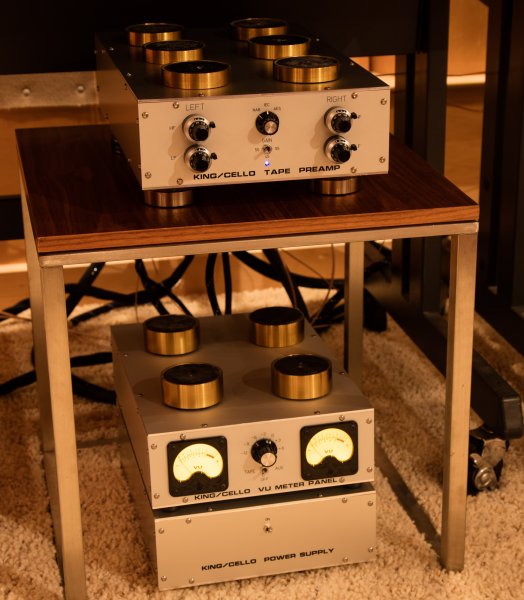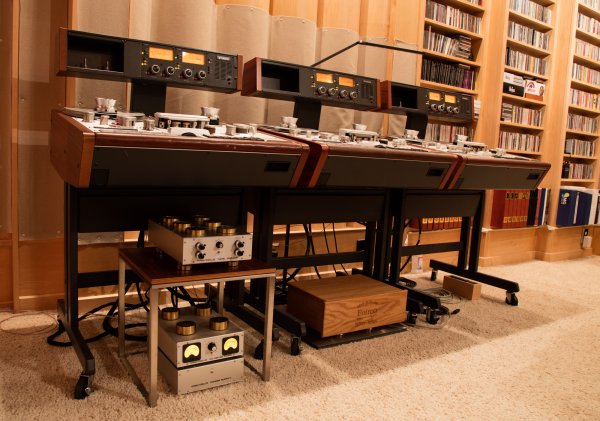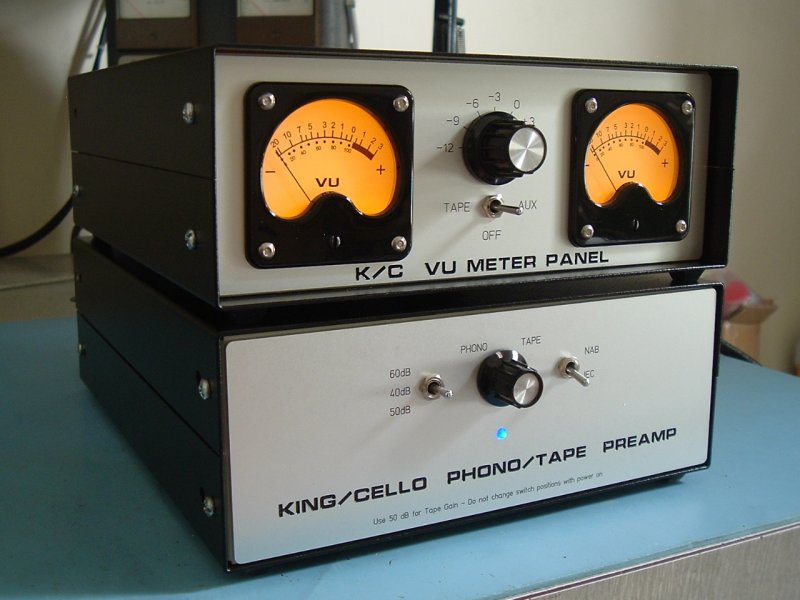yesterday received back my King Cello tape repro from Charles King, the original builder, after some modifications. the basic repro circuit is a Tom Coangelo design from the Cello years, and Charles added his own power supply. i've had it since 2008. back then i had Charles add a 50 ohm 'zeel' output interface to allow it to be optimized into my darTZeel preamp......which allows me to have my -3- big Studer A-820 decks reside on the opposite side of my room without any sonic penalty for that 20' + distance.
the original King Cello was pretty basic, and did not lend itself to any adjusting to particular heads or tapes. i was using it for both my 1/4" Studer and my 1/2" Studer with the same basic set-up.......a compromise for sure. yet i loved the sound of the King Cello with my tapes. however; recently there have been a number of Tape Repro preamps come to market and so i was considering making a change as these newer ones all came with the ability to adjust the frequency response to particular heads and tapes.
but before i go down that road i figured i would see what the King Cello could do if it had the flexibility to be adjustable. so i contacted Charles and we came up with a plan to add pots and meters, also added was a second input so i would not need to plug and unplug the direct out's from the 1/4" and 1/2" decks. and while he was at it i had him add a Furutech FI-09 NCF IEC inlet to optimize my NCF plugged power cords. the meters required a 3rd box, and the preamp box had to have new front and rear panels.
i'm very happy about how it all looks and i did hook it up and using the Pot adjustments that Charles recommended i listened last night zero noise or hum of any kind and to my ears it's a little better even after it's cross country trip. either today or later this week a local friend will come over and walk me through the process of adjustment. Charles did send some guides for me but i'll wait for some hand holding.


the original King Cello was pretty basic, and did not lend itself to any adjusting to particular heads or tapes. i was using it for both my 1/4" Studer and my 1/2" Studer with the same basic set-up.......a compromise for sure. yet i loved the sound of the King Cello with my tapes. however; recently there have been a number of Tape Repro preamps come to market and so i was considering making a change as these newer ones all came with the ability to adjust the frequency response to particular heads and tapes.
but before i go down that road i figured i would see what the King Cello could do if it had the flexibility to be adjustable. so i contacted Charles and we came up with a plan to add pots and meters, also added was a second input so i would not need to plug and unplug the direct out's from the 1/4" and 1/2" decks. and while he was at it i had him add a Furutech FI-09 NCF IEC inlet to optimize my NCF plugged power cords. the meters required a 3rd box, and the preamp box had to have new front and rear panels.
i'm very happy about how it all looks and i did hook it up and using the Pot adjustments that Charles recommended i listened last night zero noise or hum of any kind and to my ears it's a little better even after it's cross country trip. either today or later this week a local friend will come over and walk me through the process of adjustment. Charles did send some guides for me but i'll wait for some hand holding.




